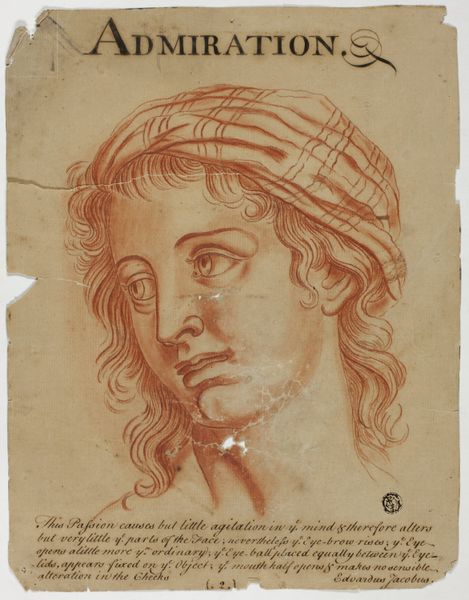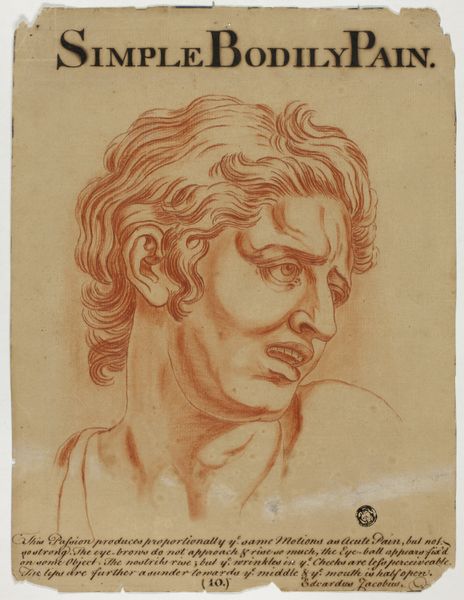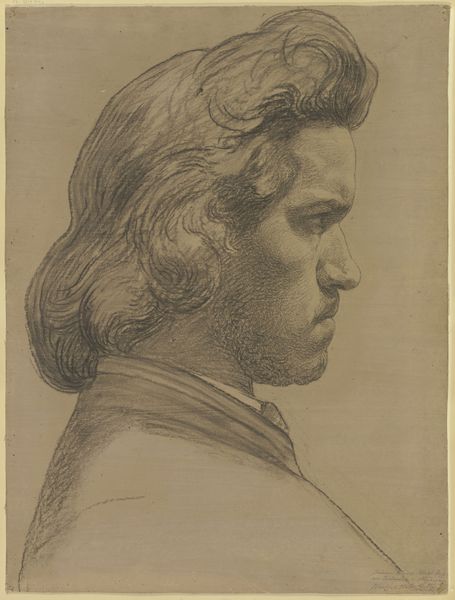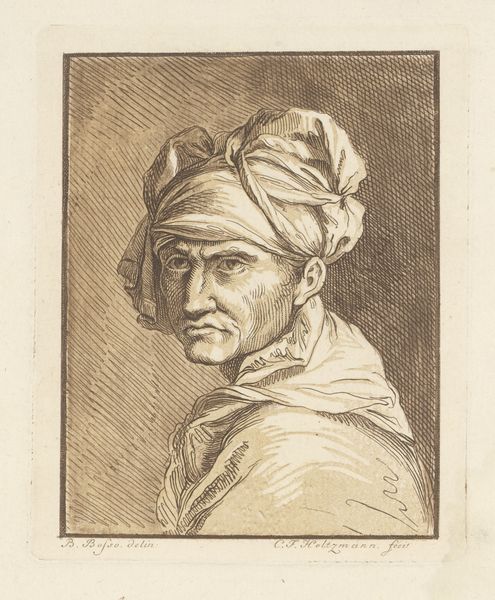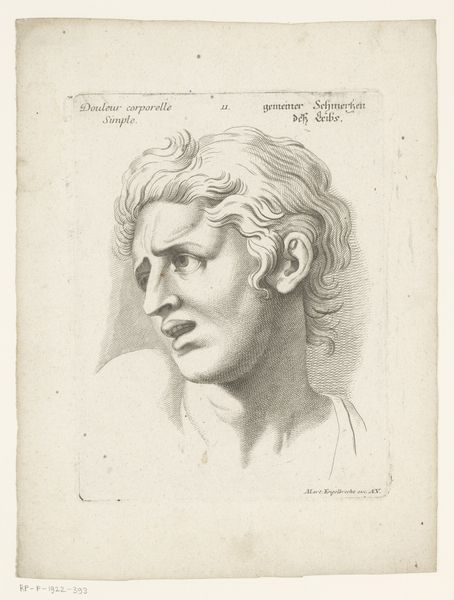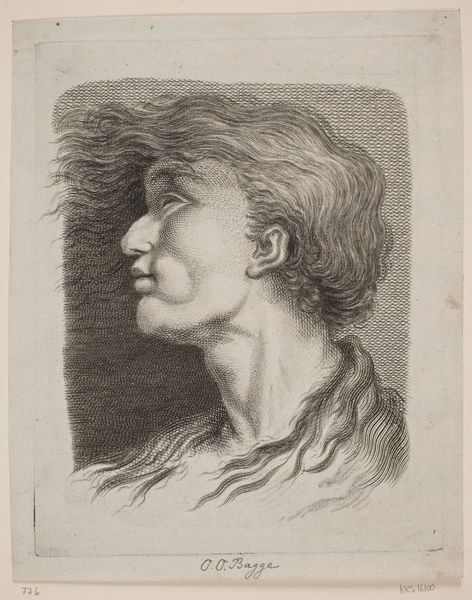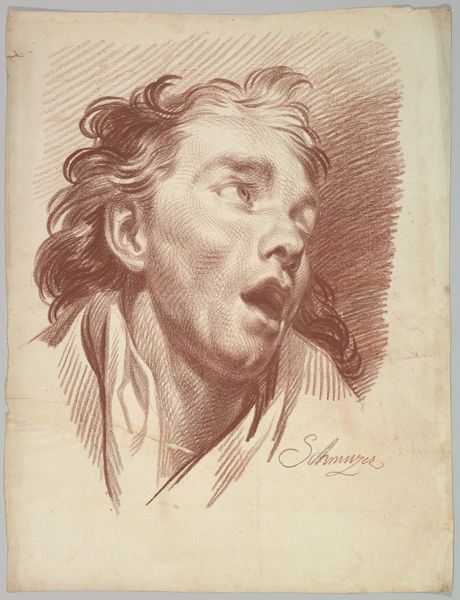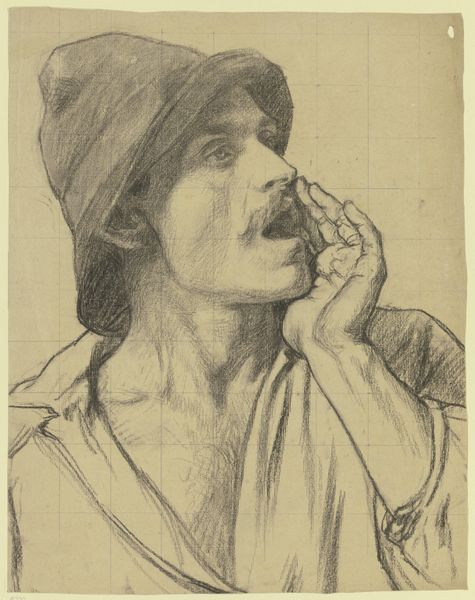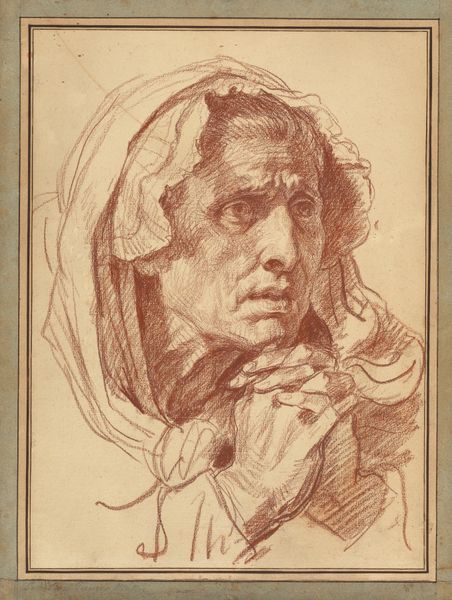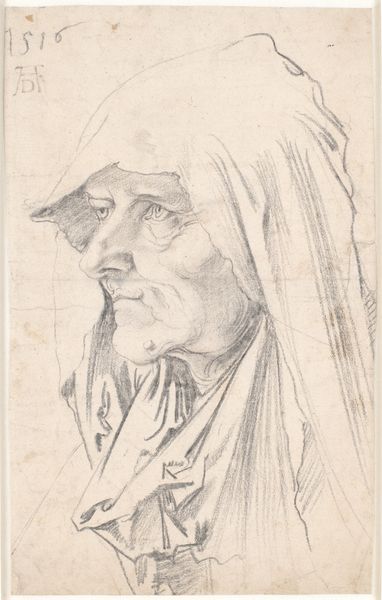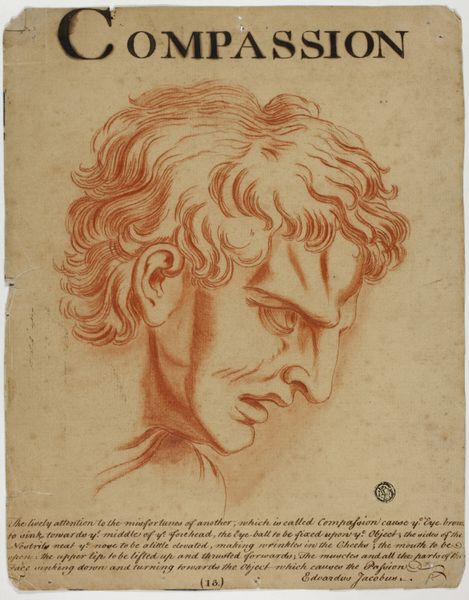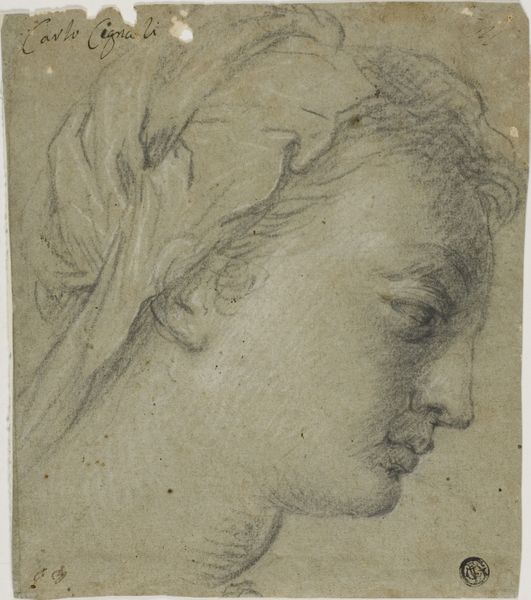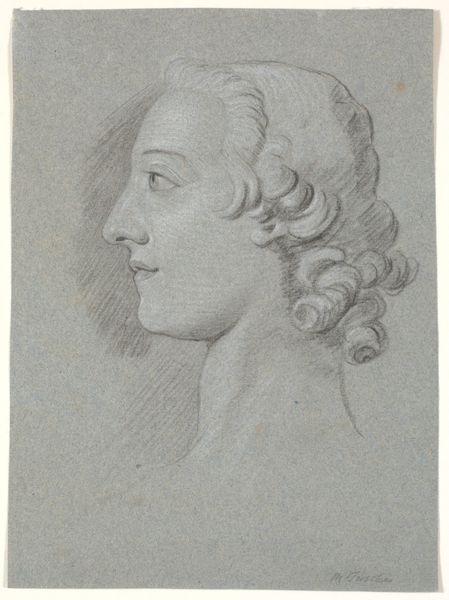
drawing, print, paper, chalk, graphite
#
portrait
#
drawing
#
narrative-art
# print
#
caricature
#
caricature
#
figuration
#
paper
#
chalk
#
graphite
#
history-painting
#
academic-art
Dimensions: 282 × 216 mm
Copyright: Public Domain
Editor: This drawing, titled "Desire," dates from after 1698 and is by Eduardus Jacobus. It’s rendered in chalk and graphite on paper and currently resides at the Art Institute of Chicago. What strikes me first is the intensity of the subject’s gaze – almost unsettling. What do you make of it? Curator: Unsettling is a great word. I feel a similar tug – the artist has captured a raw nerve. Note how Jacobus emphasizes the facial muscles, pulling the eyebrows down and focusing the eyes. Desire, in this context, isn’t a gentle longing, but something bordering on painful. Editor: So, it's not just about wanting something; it’s about a more consuming, maybe even destructive, want? Curator: Precisely. And that's fascinating. Remember the period! This was post-Renaissance, deeply steeped in Baroque drama but tilting towards the Enlightenment’s examination of human emotion. Jacobus dissected ‘Desire’ to show not just its surface appeal, but its internal tension. Tell me, what does the text beneath the image convey? Editor: The script describes how the passion brings the eyebrows close and forward towards the eyes which appear more open than ordinary and enflamed, while the nostrils rise and spirits being in motion provide a lively glowing color. Curator: It does seem a clinical observation that accompanies the art, explaining how 'Desire' transforms physical appearance. The artist goes to extraordinary lengths to render emotions accurately, making this portrait memorable. Editor: I initially saw a simple portrait but now realize Jacobus offers a deeper insight into the darker facets of human emotion, revealing its consuming nature. It gives me goosebumps. Curator: It certainly holds power, doesn’t it? A tiny drawing, capable of unleashing such emotional complexity.
Comments
No comments
Be the first to comment and join the conversation on the ultimate creative platform.
